
Бесплатный фрагмент - Living Science – 3
Decisive experiment
Living Science
What is "Science of the Future"? It is very difficult to predict this. Until the twenty-first century, people talked about giant dams, cities under a glass dome in the Arctic Circle, bases on the Moon and apple orchards on Mars. Time has adjusted forecasts. Since the beginning of the Millennium, electronic means of processing and disseminating information have been spreading. Reality is no longer so important to people. A wide range of sensations from touching it is given by personal computers, mobile phones, which are hardly distinguishable from them, news feeds, films and realistic games.
The development of space research occurs most of all at the level of enthusiasts - individuals with financial resources.
Much in science itself depends on individual researchers. Everything starts with them. Powerful state institutions, in the best case, only pick up their ideas.
So what, in subtle details, "Science of the Future" - you ask. - Does the author know something, or is he just thinking about it?
- But how do you react to such an assumption that pure science is able to reveal intelligent, or only with the rudiments of reason, creatures that live next to us? The results of experiments and, in general, our whole life depend on their will. They can be subjugated and used as you see fit. Own economic welcoming brownie, sculpted according to all the rules from ethereal matter - this is also the Science of the Future.
How do you feel about this?
Or, the state will be interested in the fact that by creating a semblance of temples or pyramids, it is possible to achieve a certain influence on the consciousness of millions and billions of citizens. And this is more likely not a religion, but technocratic magic. Managing people without advanced tracking systems, video cameras and smartphone spies is the limit of the officials' imagination. Or such structures can be used by religious preachers who want an immediate increase in spiritual wealth.
How do you feel about the fact that Living Science, relying on the material similarities of objects of the past in the present, will effectively restore everything that once existed? Yes, exactly, from an earthen jug of the time of King Xerxes to, imagine, a man?
Hard.
I suggest you, reader, researcher, to disassemble the scattering of my experiments. Here, amidst rusty debris, jumbled wires, and white-light lamps, you will find the Grain
Light is faster than light
... From the science known to us, taught in schools, has spun off, now already similar to magic, its secret peak. It happened in the first half of the twentieth century.
First of all, scientists, whose portraits you see on the pages of textbooks, introduce the provision that light particles do not have a rest mass. These corpuscles themselves lose the status of material formations and are henceforth called "pure energy". And, this despite the fact that energy is an abstract meaning, it is just the body's ability to do work. A particle with an electric charge, spin, a complex internal structure turns into a quantum of energy that does not have any of the presented characteristics. How is this possible? This state of affairs seeks to represent the Special and General Theories of Relativity, formulated at the beginning of the twentieth century.
There is a basis for the creation of the theory of SRT and GRT. This is a curious behavior of light. First, its speed seems to be always the same. It is equal to the constant C - 300 thousand kilometers per second, even when the source moves towards the observer. The principle of arithmetic addition of velocities does not apply here. Otherwise, the starry sky would appear to us as a set of glowing lines. The stars move fairly quickly and revolve around their axis. If their speed were transferred to particles of light, photons, arriving at an observer on Earth sooner or later, would blur the image of the star. But is this a reason for the statement: "The speed of light does not depend on the movement of the source"? Yes and no. Photons with a speed different from C exist. This is a common occurrence.
However, the method of registering them should be different.
The Mössbauer effect is known.
Two crystals cooled to almost absolute zero, with barely vibrating atoms, are not able to exchange quanta, unless they begin to move relative to each other at a speed of several centimeters per second. The quanta fly through the crystal without finding an atom with a suitable absorption spectrum. As soon as the absorber of quanta starts to move, photons pass through it and are registered by the detector.

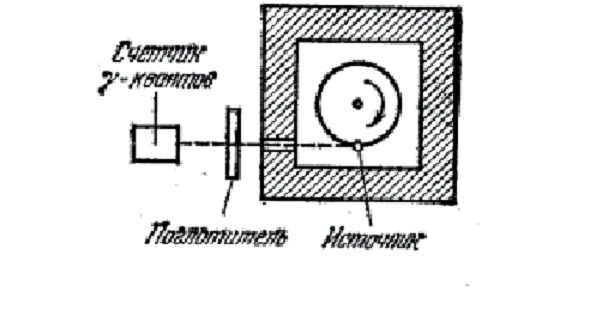
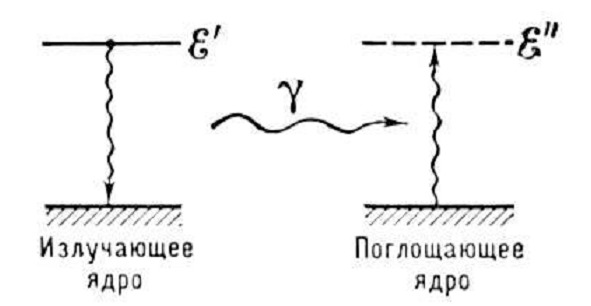
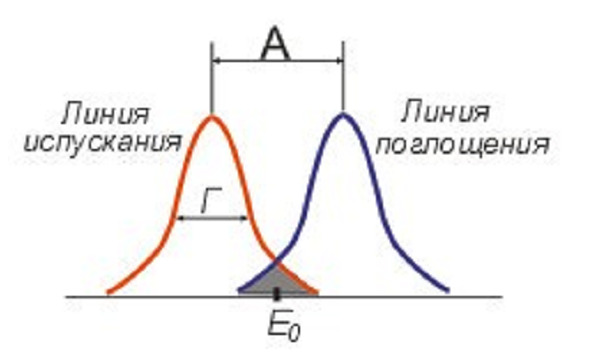
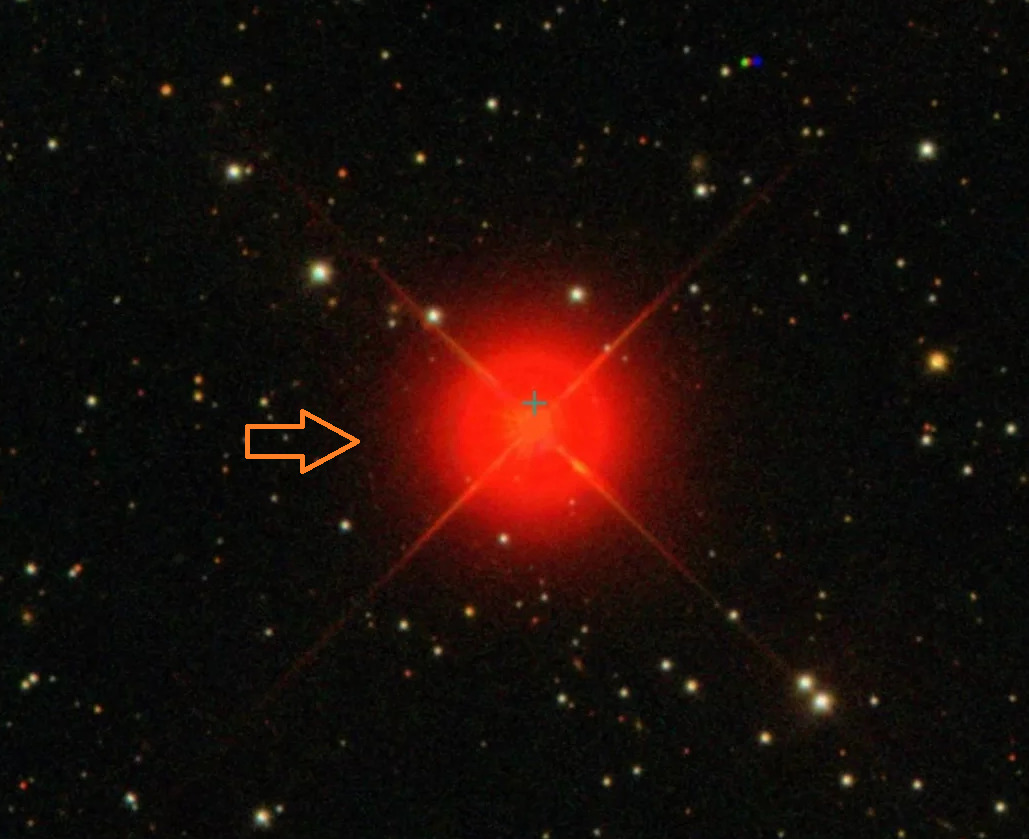
In other words, the emission lines must either completely coincide or intersect. If objects have a lot of elementary particles moving with thermal velocities in all directions, the possibility that they will "see" each other, even moving with considerable speed, remains. And yet, the speed of mutual movement, until the complete disappearance of optical contact, is limited.
We do not see these celestial bodies as optical similarities of comets due to the fact that the speed of light is limited by the intersection of emission-absorption lines in our eyes and the matter of stars. Otherwise, for example, Barnard's "flying" star, which moves across the firmament the diameter of the moon in 170 years, would look like a tailed star. But - we must look more closely. Perhaps artificially created ideas about the finiteness of the speed of light prevent astronomers from noticing a certain blurring of stars (and especially double stars) in the direction of travel.
…One of the author’s long-standing experiments is the transillumination of a rotating semitransparent disk. The photographs show that closer to its edge, where the linear velocity is higher, the screen becomes more transparent (whereas with a stationary disc, the illumination is uniform). The higher the mutual speed of the light source and the obstacle, the lower the probability of absorption by the screen of «non-standard» quanta.
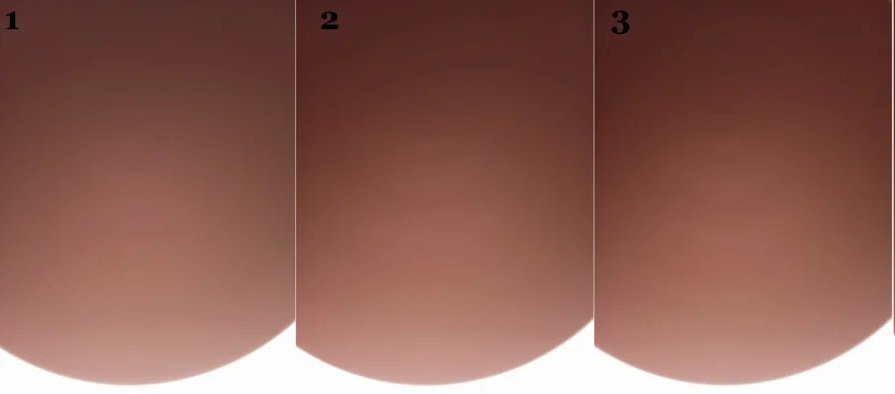
… We take a thin textolite disk, connect it to the axis of the electric motor and spin it up to a linear speed of 15 m. S. Below is the emitter. This is not at all a weakly radioactive crystal of cobalt 57, frozen to 80K, but an ordinary (incandescent or mercury) lamp connected to the household network. We photograph from above with a digital camera (in previous experiments, a film camera was used). Compare the images at the maximum and minimum, about 1 ms, rotation speeds.
At high speeds, the disc is "bleached".
A disk or a photodetector - photons don't care. At "non-standard" quantum velocities, cameras or eyes are simply not able to absorb and fix a normal photon of visible light. Accelerated or slowed down by elementary emitters quanta (those microparticles that move towards us or away from us) bypass their sensitive surface and pass further, like X-rays.
Therefore, the stars seem to us to be points.
Thus, the Mössbauer effect manifests itself not only in the conditions of first-class laboratories, with frozen crystals and gamma-quanta, but also on the table of the amateur experimenter and everywhere in life.
Perhaps the experiments seem naive. Perhaps, in such a setting, they are generally incorrect. But they have Grain in them.
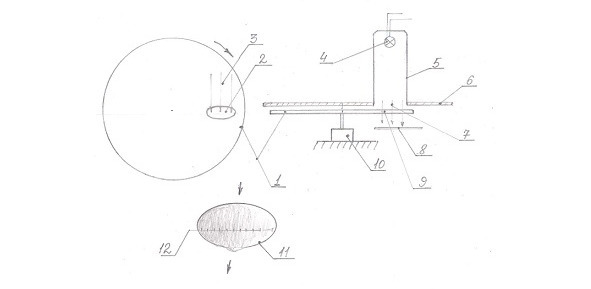
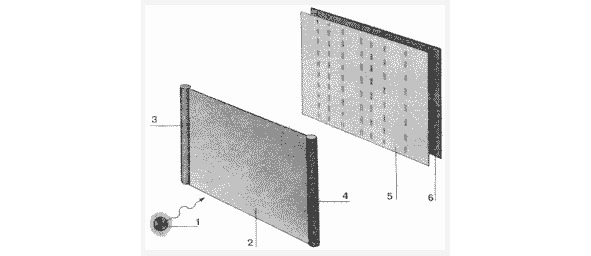
... The movement of the screen can be replaced by a heated screen. The atoms of the barrier fluctuate faster. This experiment is described in detail in the publication "TM" No. 5, 2000. - "Temperature and radiation". The light stream passes through the glass with a gradient from 200 C to room temperature. The photographic paper located behind the screen captures the appearance of dark stripes longitudinal to the gradient. The heated area becomes more transparent. Thus, the idea that photons with a non-standard speed are less likely to be captured by matter is confirmed.
... The emission and absorption of radio waves are collective. Different groups of microparticles are involved in the process. In metals, these are free electrons with high intrinsic velocities. Therefore, radio waves, "superluminal" and "before light" more easily manifest themselves. Experiments on the radar of celestial bodies, such as Venus, carried out by American and Soviet astrophysicists in 1961, show that the speed of an electromagnetic wave is added to the speed of the planet itself. SRT supporters argue that relativistic calculations are necessary for the functioning of the global positioning system satellites. This is not true. The adjustment of the position of the stations in orbit is carried out according to the "reference points" on the Earth, without the Lorentz formulas, tensors and "time dilation".
We are surrounded by streams of hidden light particles that can be detected. Light substance is capable of creating structures that have zero speed relative to atoms and molecules.

We measure the speed of light. At home
Based on the materials of the author’s articles in the TM magazine, No. 10, 2001 and No. 3, 2002.
…In a household fluorescent lamp, the plasma temperature is on the order of tens of thousands of degrees. This corresponds to the movement of charged particles at a speed of about 100 km / s. Photons emitted by ions flying with a speed V must have a speed C + V, directed along the axis of the lamp parallel to the photographic film, in accordance with the classical ballistic principle of the addition of velocities (and not with the SRT formulas). If this is the case, then the spot will be displaced in the direction of movement of the ions emitting light. But if the second postulate of SRT is true, then the light spot will not shift. The speed of the light source V will not add to the value C. The course of the experiment. I use a miniature neon lamp with a glass sheath that is transparent to UV radiation. At a pressure of about 0.1 mm Hg, a distance between the electrodes of 1.7 mm and an operating voltage of 220 V, inert gas ions are capable of acquiring a speed comparable to the speed of light C. Light from such a radiator passes through a narrow diaphragm (or camera obscura) and hits the screen, located parallel to the plane of the emitter electrodes at a distance of 0.8 m. The direction of the current in the lamp can be changed using a diode. After switching on, a lamp image appears on the projection screen. Both electrodes and the gas discharge column between them are clearly visible. When the direction of the current is changed, the image is displaced in the direction of the movement of positive ions by 11 mm with an absolute error of 0.2 mm. This means that the speed of light C is added with the speed of movement of its source V according to the classical, «ballistic» principle, and not in accordance with the SRT formulas. The only thing is that it is possible to calculate the speed of the radiation source from a ray of light, outside of spectral analysis, which is no longer in the spirit of the Theory of Relativity. The exact value of the speed of movement of ions in a neon lamp is difficult to determine. According to indirect estimates, it is on the order of 2000 km / s. This is in good agreement with the results of the performed experiment. It follows from this that either the second postulate of SRT is incorrect, or its physical meaning needs some special clarification.
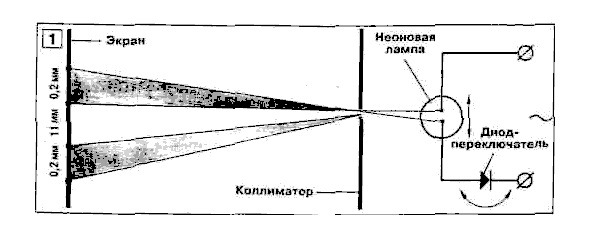
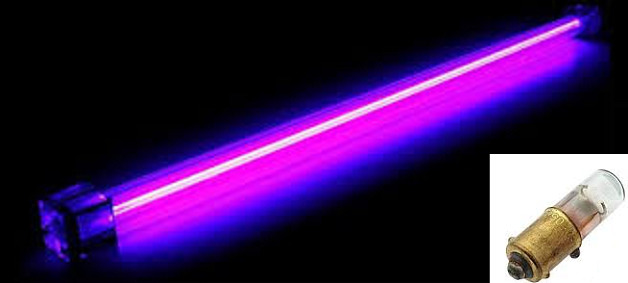
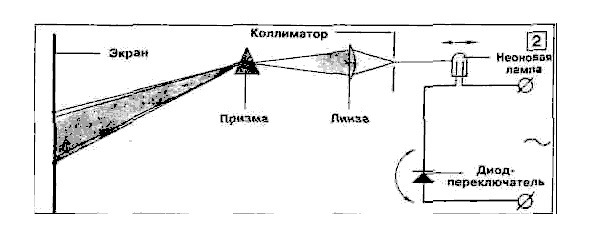
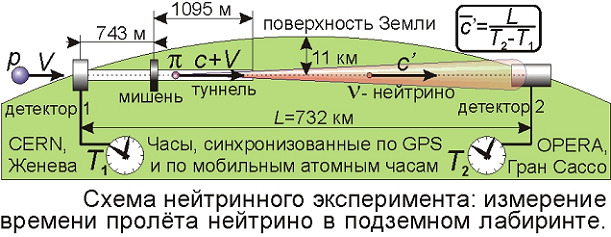
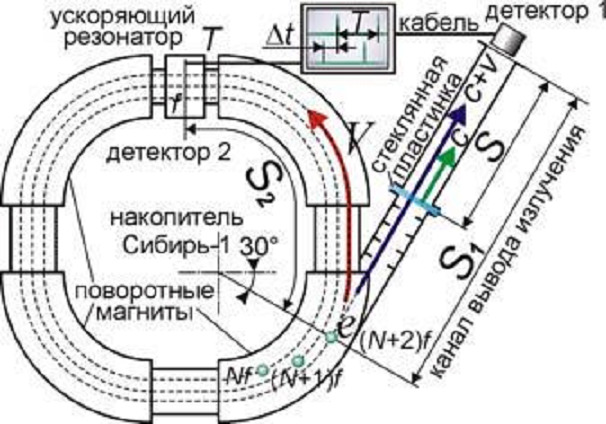
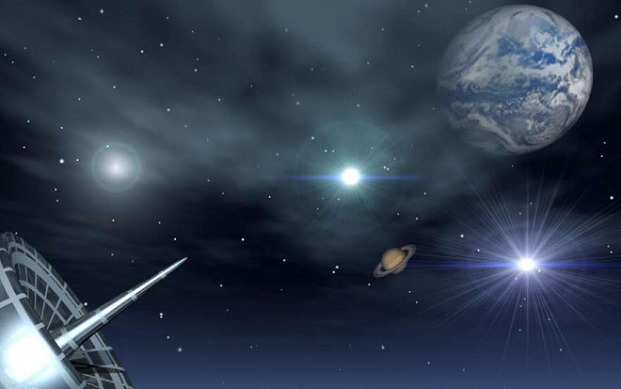
As the saying goes, "Ein Versuch ist kein Versuch" (search-search), and therefore I put on a second experiment with a neon lamp, fundamentally changing its conditions. The main element is now a glass prism, which deflects light rays of different wavelengths in different ways. If the speed of light is greater than C, the spectrum shifts towards the violet side. If less than C, a "redshift" occurs, as when observing a receding radiation source. But, this is not the Hubble effect. I place the neon lamp so that the plane of the electrodes is perpendicular to the pinhole screen. When the lamp is turned on, a spot of light appears on the screen. After polarity reversal, the beam is shifted by 24 arc minutes. Rejection error 4 minutes. Using well-known formulas, we calculate that in this case the change in the speed of light is 520 km / s, with an error of 85 km / s.
... Scientists from the OPERA group in Gran Sasso, Italy, in contrast to the author of the article, have the ability to directly measure the speed of microparticles. Neutrino either does not have rest mass, like a quantum of light, or it does. Like a photon, it rushes at speed C. The speed of the source itself does not matter. At least that's what is commonly believed. Using synchronized detectors, Italian physicists discover the existence of "small neutrons" moving at a speed exceeding C by 7.5 km. with. The possible error is three orders of magnitude lower than this deviation. The publication will take place in 2011, and immediately attracts a flurry of criticism. Experimenters have to make excuses awkwardly.
In Russia, a direct measurement based on the scheme proposed by the author was carried out by the masters of academic science. Without references to articles by an amateur experimenter. This is evidenced by the publication of Academician of the Russian Academy of Sciences E. Aleksandrov in the journal "Science and Life", No. 8, 2011. A modest gas-discharge lamp is replaced here by a synchrotron, a cardboard screen and a pinhole camera - photosensors with high-speed oscilloscopes.
“… As a pulsed light source, a synchrotron radiation source (SR) - an electron storage ring“ Siberia-1 ”was used. SR of electrons accelerated to relativistic speeds (close to the speed of light) has a wide spectrum from infrared and visible to X-ray range. Radiation propagates in a narrow cone tangentially to the trajectory of electrons along the abstraction channel and is removed through a sapphire window into the atmosphere. There, the light is collected by a lens onto the photocathode of a fast photodetector. A beam of light on its way in a vacuum could be covered by a glass plate introduced by means of a magnetic drive. At the same time, according to the logic of the ballistic hypothesis, the light, which had previously supposedly had a double speed of 2C, after the window had to acquire the usual speed C ”.
… Experience shows the speed of light, within an error of 0.5%, equal to the known constant C. In the experiment of these scientists, the question of how to divert light from elementary particles moving in the opposite direction is not even raised. The corpuscles rotate in the accelerator exclusively counterclockwise, at different speeds. There are no reports that the experiment was performed with light from particles accelerated by half, at three-quarters of the standard speed in the synchrotron. Comparing the results on a high-speed oscilloscope screen would dot the I. The only element of experience here is the glass plate. However, who said that such a screen is able to equalize the speed of photons to standard C?
… One of the peculiarities of Living Science is that we consider the interaction of macroscopic bodies as a result of individual interactions of particles.
What else can Living Science offer?
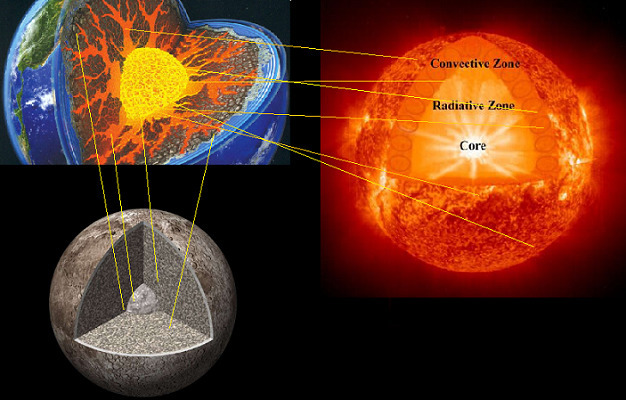
…The transfer of heat energy is possible not only by electromagnetic waves but also by means of the gravitational field. In the first case, according to the laws of classical quantum mechanics, the interaction is transmitted by quanta. What is the «quantum of the electromagnetic field» is spelled out in textbooks — a photon, an oscillating thread, for visible light having a length of 3 meters. Scientists write dully about quanta of static magnetic and electric fields. Sometimes «gluons» appear in the interaction schemes. How they help microparticles communicate over long distances is not clear. It is very difficult to imagine the forces of attraction going into infinity as a set of glomeruli. Until now, the experiment has not even measured the speed of propagation of gravitational waves. The simplest option is vacuum, the displacement of the ball is to measure the response speed of the second object. By default, in calculations of the position of celestial bodies, the speed of gravity is considered infinite. In another version, it is equal to the speed of light. And gravitational forces, most likely, represent a web of connections between elementary receivers and transmitters of the field — microparticles. In this case, heat transfer by means of gravitational interaction is quite possible.
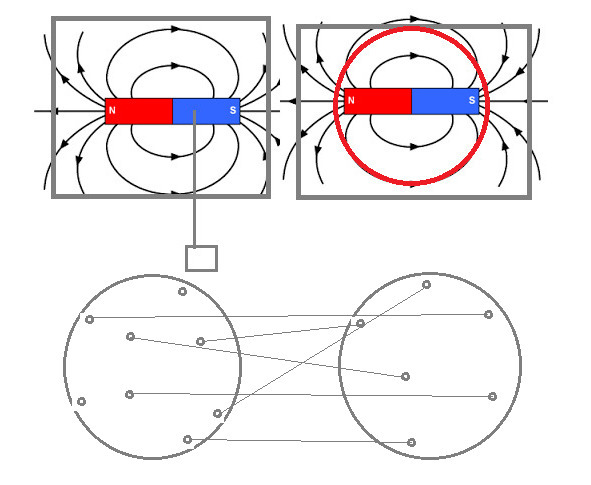
Output…
... It is believed that the radioactive elements contained in the volume of the planet are responsible for heating the earth's interior for 3.5 billion years. No matter how much you leaf through textbooks, you will not find a report on what exactly these elements are, what their number and half-life should be in order to maintain the temperature for so long. And why, finally, the peddling chain reaction did not blow our Earth to pieces. Our option. The planets are held together by the gravity of the sun. Through the same channel, by means of "remote diffusion" of microparticles, heat is transferred from the star's reactor to the bowels of the planet. The Earth is exchanging such latent heat with the Moon. Recall that Selena is not so cold. The temperature of the mantle is 200 C, and iron is boiled in the core. A certain share in the heat exchange between bodies is occupied by the so-called "hidden light". Only arrays of matter with the same spectrum, temperature, composition as the sender are capable of catching the hidden component of the beam. Such receivers-receivers are certain layers of the Sun (a recognized source of energy) and the core of the Earth.
…A heated magnet must transfer heat to other magnets by means of its «quivering» magnetic field, even through obstacles. The author set up experiments. Within 0.1 C, when one of the magnets was heated at 120 C, at a distance of 4 cm, no heat transfer occurred. The result for the suspension of magnetized metal powder turned out to be negative. However, this does not mean that this phenomenon does not exist in nature.
The world in a new light
Does ether exist, the world's ocean, in which light waves roll?
The classical scheme of the Michelson-Morley interferometer, a device that proved the absence of ether, is as follows. The light beam is split in half by a semi-transparent tilting mirror. One ray goes towards the ether stream, then back. The second ray is perpendicular to the flow, therefore it serves as a standard for the speed of the light wave. If the velocities do not coincide, the interference pattern should change. The figure shows that the position that the rays pass strictly perpendicular paths is incorrect. During the stroke along the arms of the interferometer, the rays are deflected by the ether stream. The detector receives waves initially deflected towards the ether stream. The scheme for constructing a real interference pattern is more complicated than Michelson's drawings.
If the ether is carried away by the beam, then the flow velocity is 100 km. with. This value is consistent with the speed of the Earth’s revolution around the center of the Galaxy, 200—220 km. with. (taking into account that the natural rotation of the device together with the planet is an angle of 90 degrees). Why wasn’t it noticed earlier? In any operation of laser communication systems, the system is «brought to zero». This rule applies to all devices. A more plausible explanation. During the day, the air in the room where the experiments are carried out warms up. A lens is formed that distorts the beam. Third version. The ceiling and floor surfaces of the room, parallel to the laser beam, have the properties of «attracting» or «repelling» light. The lines of the diffraction grating have the same properties.
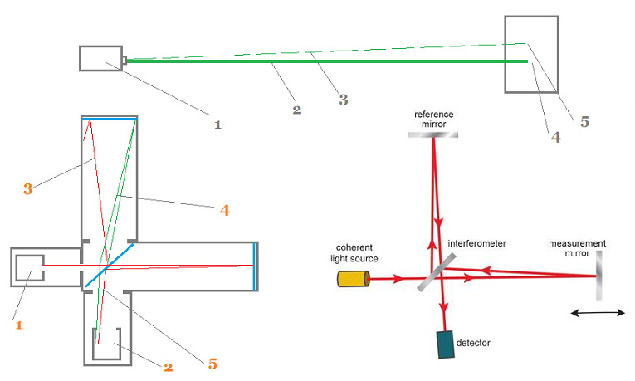
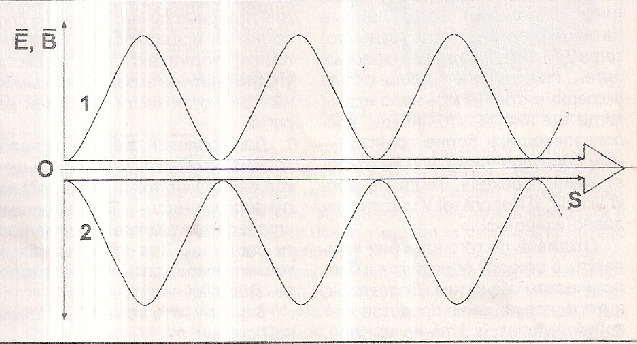
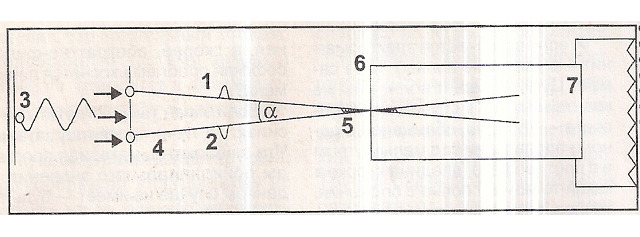
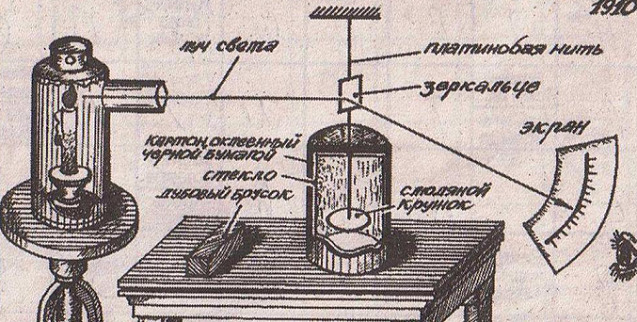
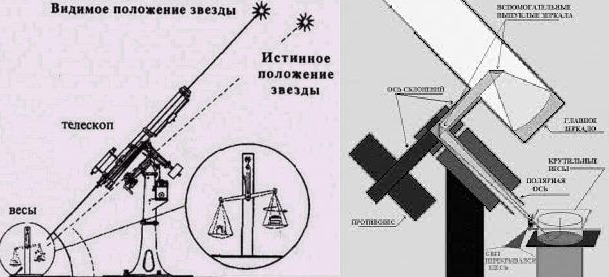
The idea of one of the experiments to detect "hidden" light. Rays (waves) of coherent light, slightly displaced relative to each other by an interference grating, should fold in antiphase and disappear. In the "folded" form, they do not interact with matter. Therefore, having divided by themselves, the rays should appear behind the screens - which is interesting in itself. A diagram of the possible disappearance of rays is presented. Of the two components of the electromagnetic wave, vectors B and E, only one is shown.
The next figure is a diagram of the installation for obtaining "black rays" (for clarity, the convergence angle of the rays is greatly increased). The light that appeared behind the screen - aluminum foil, should have been fixed with photographic film for several hours. However, neither an increase in exposure nor a change in the length of the tube gave a positive result. An ambiguous result was shown by experiments with detectors from sheets of photographic paper folded together. In the course of this work, the feeling arose that the dark zones in the beam alignment were not formed by the addition of light waves. They appear due to the fact that the direction of the photons is determined by the interference grating itself. What is an interference grating? A set of identical stripes. The stripes lay out the light, even if the light is not coherent. They are like the strings of a grand piano, responding to each other's vibrations. Are they unique? Any mutually similar objects illuminated by a point source become synchronized. Note that the beams of individual lasers, equal in wavelength and amplitude, directed to one point, do not add up. There are no such cases. Perhaps the laser atoms themselves feel the presence of twin microparticles in another object, and do not send photons to where, having formed in antiphase, they could violate the law of conservation of energy.
A superluminal or pre-light quantum exists, obeys the ballistic law of addition of velocities, but it is rather difficult to weed out and register. “Catching” a superluminal signal with a conventional sensor is the same as trying to record X-rays with an electronic camera.
Let us turn to the article by V. Belyaev, published in "TM" No. 9, distant 1980. The author reproduces the experiments of Professor N. Myshkin (and also William Crookes), made at the beginning of the twentieth century. It turns out that the disk, suspended on a thin thread, for no apparent reason, periodically turns to one or another angle. These movements correlate with solar activity, the position of the moon, even when the scales are in the basement. As a first approximation, the torsion balance is the sensor for the hidden component of the light beam. In contrast to the semitransparent petal, which measures the pressure in the experiments of Academician P. Lebedev, our light recorder is a rather massive screen.
What else might sensors that are tuned to «hidden» light look like? Let us turn to the experiments of astrophysicist N. Kozyrev to determine the path of a star in the sky. Let’s discard the theory about the «influence of Time on physical processes», let’s leave the experiment. The academician directs the telescope to a distant star. A thermal resistor is located along the eyepiece axis. The change in the resistance of the sensor occurs not in a thin surface layer like a photocell, but throughout the entire volume. Therefore, the signal is recorded along the traversed path of the star. Option — already known to us torsion scales with a screen. This is how the detector detects «superluminal» and «pre-light» photons.
Energy returns. Is always
… How to return the energy dissolved in the bustle of microparticles? Probably, there are natural processes that increase its quality to its original value. Everything happens by itself. For clarity, a boiled kettle placed on the table gives energy to the table. it cools down. High-order energy is replaced by a uniform background. Is the reverse process possible? Will heat pulses be transmitted from the medium to the kettle? Will it boil for no apparent reason, on the kitchen table? The question is strange. But this should happen if there is a circulation of energy in nature from the beginning of time. One of the first publications of the author on the topic - an article in "TM", No. 4, 2000:
…«What is the difference between an object of the macrocosm — a monolith — from a cloud of dust obtained as a result of its long grinding and subsequent shaking? It is well known: the area of contact with the medium of another phase, for example, with a gas. That is why those chemical reactions take place in powders that do not affect monoliths at all — iron filings burn in the air, while an iron nail, perhaps in pure oxygen… But the question is — what happens when a monolith is ground or, conversely, sticking together dust back into a monolith with an emission-absorption spectrum? Let’s call on the laws of quantum physics to help. In a monolith, the spectrum runs through all energy levels, which, theoretically, are as many as there are atoms in the body. In a gas, however, individual atoms radiate independently, at several levels. But when atoms-neighbors appear, the levels shift so as not to repeat each other — the exclusion principle, introduced at the beginning of the 20th century, works. Wolfgang Pauli: there can be no interconnected atoms, the energy parameters of which are the same. But powder is an intermediate state between gas and solid. Apparently, it is impossible to draw a sharp boundary at which the properties change abruptly. And accordingly, the spectrum of the dust cloud, as the particles are fragmented, will approach the spectrum of the gas. But what happens if you thicken it to the volume of the original monolith? When, say, one hundred particles merge, each energy level will take one hundred atoms at once. To restore the order accepted in the microworld, each of such oversaturated levels will tend to split into a hundred isolated lines of the spectrum. The most natural way to restore the energy hierarchy for the atoms of the newly formed monolith is to emit a certain amount of electromagnetic quanta. Consequently, the thickened cloud of dust will generally become colder than the environment.

Aren't we humans the same hubs? Why are our cells not isolated "specks of dust" separated by membranes? But the membrane permeability is constantly changing. And are not many properties of living organisms that are not amenable to modern science associated with such a combination of many millions of "dust particles"? "
Continued in the article "Energy Concentrators", "TM" No. 6, 2002, based on the materials of experiments. Two vessels, one with a porous medium, the other with a solid one, are located in a thermostat. We measure the temperature of the internal environment every 20 minutes using sensors. It turns out that the temperature in the container with the granular medium (wet sand) changes abruptly. A continuous medium produces a flat temperature graph.
Granular matter has the ability to collect energy. The temperature in the anomalies rises by tens of degrees. By organizing matter, you can achieve a predictable release of heat in certain areas of it.
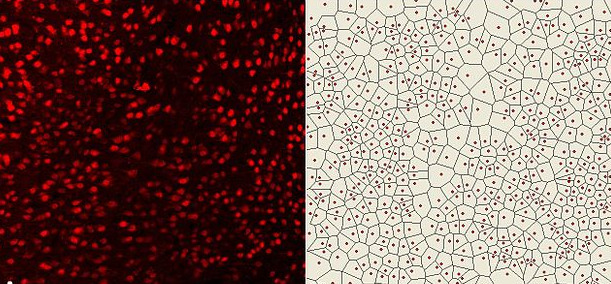
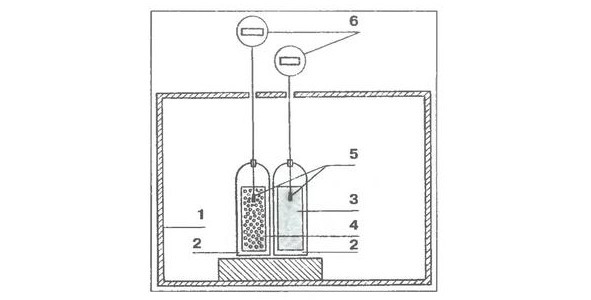
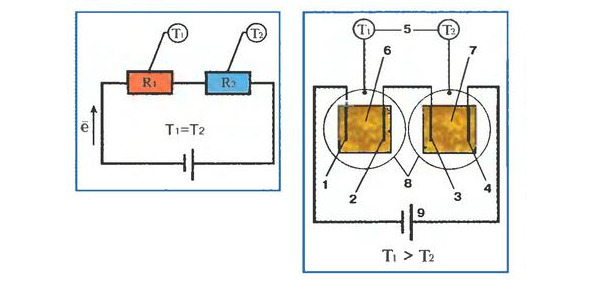
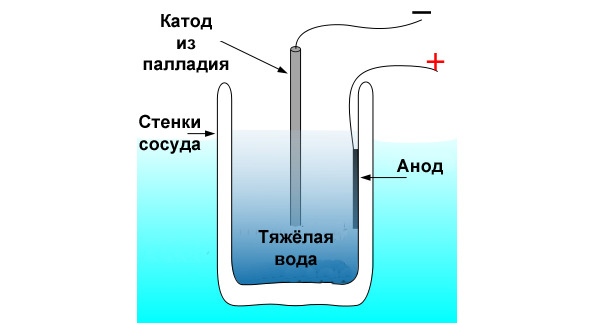
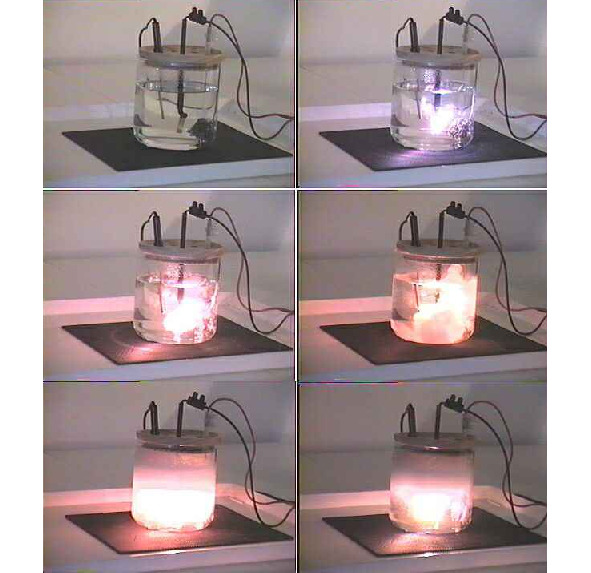
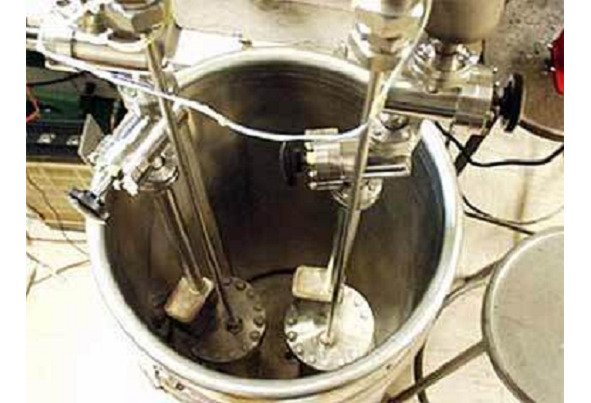
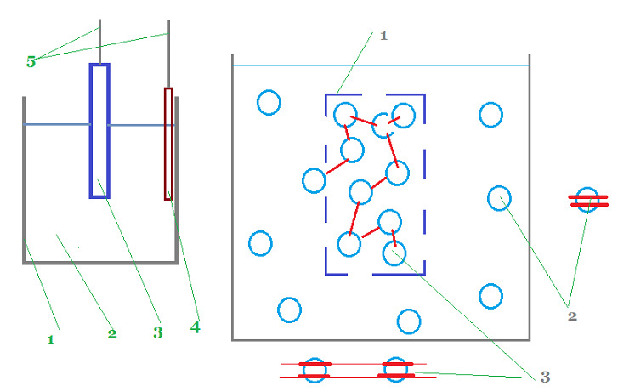

What is a «granular medium»? As a first approximation, this is sand soaked in water. The second article on the topic, the journal «Tekhnika-Molodezhi», No. 6, 2003.
«Some fundamental laws of physics are so simple and obvious that no one doubts their validity and no one is engaged in their verification. In particular, this concerns Ohm’s law, according to which the strength of the direct current in the circuit (at least with its low density) is equal to the quotient of dividing the voltage by the resistance: I = U / R. Other electrical engineering rules follow from this. For example, according to the Joule-Lenz law, the heat W generated at the resistance R is directly proportional to the voltage drop U across it, the current I and the duration of its passage t, that is, W = R-U-1-t. Therefore, if two identical resistances are connected in series in a closed circuit, then the same amount of heat should be released on them per unit of time. It seems quite obvious that, bypassing the first resistance, electrons are not able to either acquire additional energy or lose it. But is Ohm’s law really fulfilled for resistances of all kinds at low current densities? Having become interested in this issue, I performed a series of simple experiments. I connected two, if possible, identical resistances to the DC circuit, and next to them I attached sensors of sensitive thermometers. Each resistance together with its „own“ sensor was placed in a separate thermostat. In the first experiments, I used incandescent lamps (rated for a voltage of 2.5 V and a current of 0.15 A) as resistances. Turning on the current (its source was a stabilizing step-down transformer and a rectifier connected to a household circuit with a voltage of 220 V), I measured the temperature in thermostats for an hour; then swapped lamps and repeated measurements. Five series of similar experiments showed that metal resistances emitted an amount of heat in full accordance with the classical laws of electrical engineering, regardless of where these resistances were located. I did not carry out measurements using other types of resistances, but I performed the experiment using electrolytic cells as resistance, in which ordinary tap water decomposed on stainless steel electrodes. The result, again, did not reveal any anomalies. But if the electrolysis of water was carried out in a porous, inhomogeneous medium, the picture turned out to be different. I filled the electrolytic cells with a mixture of quartz sand and tap water, acidified for better electrical conductivity with a few drops of hydrochloric acid (which, generally speaking, is not necessary). And the very first experiments gave amazing results that did not correspond to the classical laws of electrical engineering. Namely, the temperature in the thermostat located in the direction of the electrons’ movement turned out to be significantly higher than the temperature in the next thermostat! With a voltage of the current source of 220 V and its strength of 0.5 A, the difference was 90C, which significantly exceeded the error value of previous experiments. In total, I performed 10 similar experiments and noticed that the temperature difference between the cells clearly depends on the current in the circuit and can even reach several tens of degrees. I also noticed that the voltage drop on the first cell was higher than on the second (150 and 70 V, respectively), which explains the increased heat generation. But the main question remained unanswered: why does such a noticeable asymmetry arise, if before and after the experiments the resistance of the cells were the same? After all, this effect should not be! It can be assumed that in the first cell the electrons lose part of some of their internal energy and therefore in the second cell are no longer able to interact with ions as intensely. But after all, the second cell also (although not a style) heats up. True, in sand-water electrolytic cells there are many local and rather sharp drops in the resistance of the medium, as a result of which the electrons in it are either sharply accelerated, then sharply slowed down. Is this the reason for the effect I observed?..»
In experiments with electrolytic cells, much is unclear. Either it is electrons that give their own energy, or water ions. Maybe the grains of sand themselves, sticking together, throw energy into space. What does knowledge of the process give us? For example, the fact that the battery bank, one of several, located at the anode (plus) heats up above the rest.
The American researchers Fleischman and Pons achieved some success in extracting the "free energy". These scientists carried out the electrolysis of heavy water on palladium electrodes. The main idea is that the molecules of the hydrogen isotope accumulate in the crystal lattice of the metal, approach and interact. As a result of "cold nuclear fusion" (CNF), anomalous heat release occurs, but at the same time - no neutron radiation. In the end, the experiments, at least reproduced in other laboratories, were abandoned. However, with our theory: "Structured matter structures and releases energy", they can be put in a new way.
The main point of such an experiment. Hydrogen atoms are collected in a small volume, and therefore they are forced to emit soft photons from their energy levels. New reactors are loaded with any, even non-radioactive substance.
... As a first approximation, an electromagnetic energy generator may look like a suspension of magnetic microscopic balls in a foreign medium. According to the above, an ordered array should periodically change its properties, and hence the magnetic flux in time. It remains to add a coil of wire to get a perpetual generator. In the case of the kettle, this is the case. Let the table on which it is left be an ordered structure of many identical elements. The energy of boiling water will be distributed throughout the volume. Then there will be temperature fluctuations. The period of their appearance in a particular place can be calculated or organized. We put the vessel at the right time in the right place - and it heats up.
Living beings belong to systems that return energy to a high level. The body is made up of trillions of membranes that open and close in a rhythm. It is known that the body attracts more energy for life than it consumes when digesting food. Obviously, living matter is a semblance of a perpetual motion machine. However, not yet perfect.
Forests, crops, ice sheets, deserts, and dry lakes have orderliness. Energy of a higher order, returning to us, can draw complex patterns on surfaces. It doesn't have to be a heat spot. Similar conditions can be reproduced in a thermostat, with heat-sensitive paint that detects temperature deviations. After cooling down, inside the thermostat, you should look for spots left by the "returning" energy. The thermal background inside the "black box" is not uniform.
The simplest experiment that the author conducted, investigating the process of manifestation of temperature anomalies in a cooling environment.
We put a rectangular burette, 50/50, 7 cm high, in a thermostat. At the bottom we put a sheet of photographic paper, 45 by 45 cm. Fill the container 3-4 cm with warm water. We close the lid. This entire operation is performed under red light or complete darkness. After a few hours, we take out the photo paper and develop it. In three or four places, dark formations resembling a figure eight, a bitten apple or a toroidal vortex can be discerned on the film.
…The kind of any formation that returns energy to a high value is a vortex. In its middle, the flows of matter approach each other and thus generate a cascade of radiation. People who find themselves in the center of a tornado speak of a luminous cloud (light is energy of a higher order). Coming out of the torus, the particles of matter move away from each other and, not constrained by the Pauli principle, gain a working spectrum from the environment. Returning to the center with this energy, they again interact. We can imagine that vortices have a semblance of self-preservation instinct. Using flows of matter, they can create physical structures that contribute to their preservation, growth and stabilization.
The principle of the flying saucer
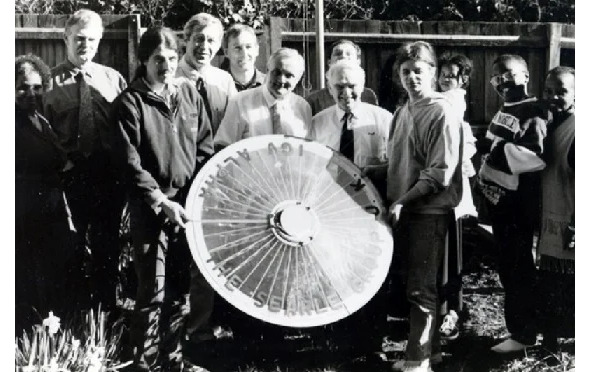
The particles of crystals frozen to almost absolute zero lose the ability to exchange quanta when their mutual velocity exceeds several centimeters per second. The radiation-absorption levels cease to coincide. This is a consequence of the Mössbauer effect, which is not adequately appreciated in terms of its contribution to the usual picture of things ...
Physical objects interact only because their constituent microparticles move. A quantum can almost always meet a particle that suits its spectrum and be absorbed by it.
Let us recall that the average speed of molecules at room temperature is about 300 ms, and of electrons in a metal is of the order of hundredths of the speed of light.
All quantum electrodynamics is based on the fact that charged microparticles exchange "glue" particles. It is not entirely clear whether in this case the corpuscles also have energy levels, it may well be. Therefore, the efficiency of interaction here also depends on the mutual velocity of the particles.
Therefore, if we move objects relative to each other with a speed, we put 1 km. with., first of all, the interaction of atomic nuclei consisting of positive protons and neutral neutrons will be disrupted. Lighter and faster electrons will lose a thousandth of the total interaction and remain in touch with each other.
In general, a body that has acquired a speed of 1 km above the Earth's surface. with., simultaneously receives a negative charge. It is difficult to calculate the overall balance of forces of interactions "electron-electron", "proton-proton", "proton-electron", but the interaction of negative charges prevails. The projectile will bounce off the Earth.
At the same time, the charge drains from the projectile.
A plasma cloud is formed.
When colliding with a target, according to the hypothesis, an imbalance between the number of protons and electrons will appear in the projectile. In this case, the blank is subjected to the action of internal forces, and in the process of destruction will release additional energy. These calculations confirm the research of Yavorsky V.V. According to his observations, the thermal energy released by the projectile when it hits the shield is four times higher than the kinetic one. With high-speed shooting, you can see that even before the projectile touches the metal screen, a flash occurs between them.
… Generators of John Searl are known. Metal discs spinning at high speed emit electrical discharges and even bounce upward.
In the early 2000s, a group of scientists from Tohoku University, Japan conducted precise experiments with a gyroscope.
... Their flywheel rotation speed reaches 18,000 rpm. The experimenters drop this device from a height of 1.8 m, in a vacuum, and measure the speed. When rotated, the fall time increases by 1/25000 of a second. This corresponds to a 1: 7000 reduction in gravity.
The author's own experience. Two electric motors are located on a dielectric support and are connected by shafts. Their stators are short-circuited, that is, they are metal cylinders.
We connect one of the motors to the network. We measure the voltage between the stator of the second motor and the ground.
At the beginning of rotation, a voltage of 2 V appears between the Earth and the motor. When the first motor is turned off, the voltage drops to zero.
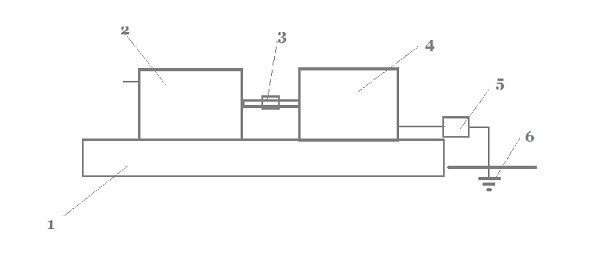
... The force of interaction between the protons of the Earth and the protons of the stator decreases, while between the electrons of these bodies remains practically the same. Electrons drip off the surface of the motor. The voltmeter registers the change in the cylinder potential - although much less than in experiments with Searl disks.
…Searl’s generator. Magnets are located on the stator, poles to the axis. The rotor is covered with magnets with the poles outward. As soon as a certain rotational speed is imparted to the rotor, it begins to rotate by itself.
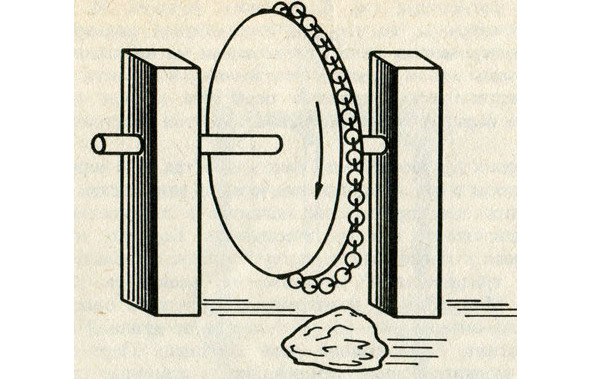
Magnetic energy is known to be conservative. If you place a magnet under a sheet of plywood, it can accelerate a steel ball on its surface. But the ball is not able to go beyond a certain point. The same magnet brings it back.
But how are «cathode rays» formed? The electron rapidly flies to the positively charged plate, is accelerated by it, then passes and leaves forever. The reverse action of the anode seems to become weaker than the primary one. If we take the example of a magnet and a ball, it would turn out that this ball slipped over the magnet, lost contact with it, and rolled on. If the ball is fixed on a disk next to a magnet, we get perpetual motion…
Бесплатный фрагмент закончился.
Купите книгу, чтобы продолжить чтение.
